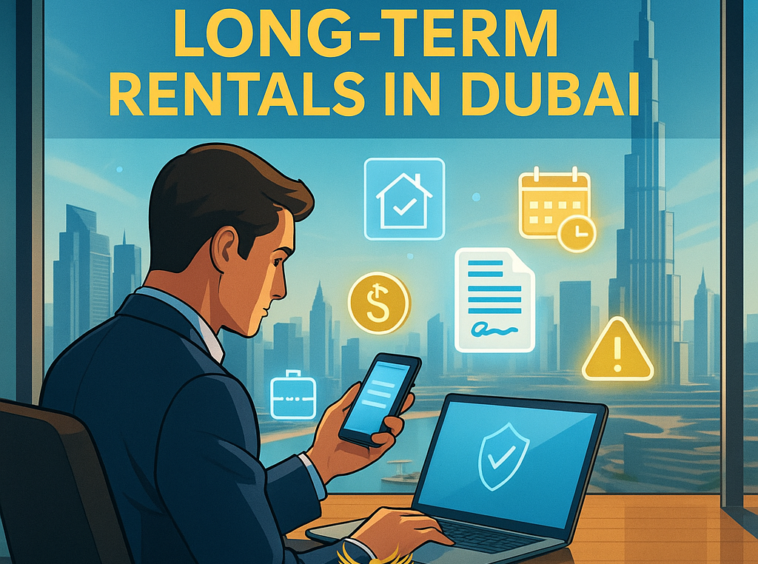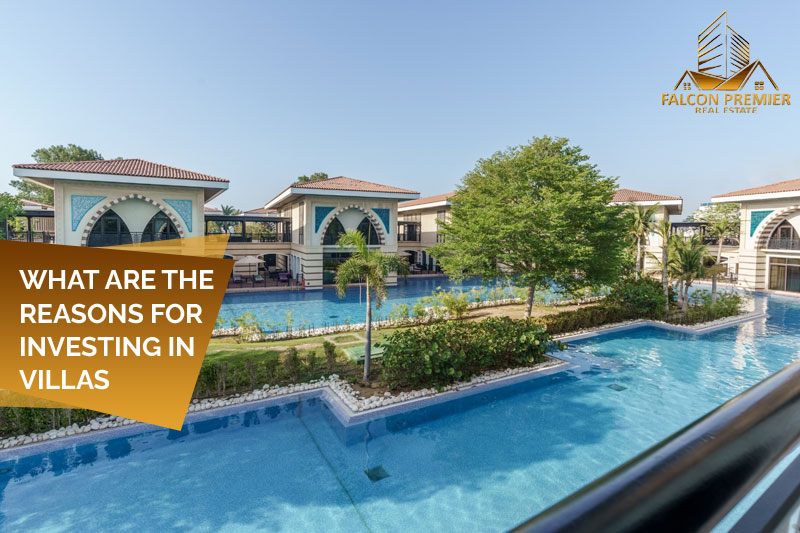Dubai remains a dynamic and rapidly evolving rental market. For both tenants and investors, understanding the difference between short-term rentals in Dubai and long-term rentals in Dubai is essential — as the decision impacts cost, flexibility, income, and legal compliance. At Falcon Premier Real Estate, we guide our clients to the optimal rental strategy based on their goals. This 2025 guide walks you through both rental models, highlights pros and cons, and shows how to choose the right fit for your lifestyle or investment.
1. Defining the Two Models
Short-Term Rentals in Dubai
Short-term rentals typically refer to fully furnished properties leased for a few days up to six months. They cater to tourists, business travellers, relocating professionals and investors seeking higher yields.
Key attributes: high turnover, all-inclusive utilities, furnished units, often licensed through the Dubai Department of Economy & Tourism (DET) under holiday-home regulations.
Long-Term Rentals in Dubai
Long-term rentals are typically 12-month+ lease agreements registered through the Real Estate Regulatory Agency (RERA) via Ejari. They cater to residents, families and tenants seeking stable accommodation with fewer moving parts.
Key attributes: lower monthly cost per unit, less active management required, predictable cash flow for landlords.
2. Short-Term vs Long-Term Rentals: Side-by-Side Comparison
| Feature | Short-Term Rentals | Long-Term Rentals |
|---|---|---|
| Typical Duration | Daily to up to 6 months | 12 months or more, often renewals |
| Furnishing & Utilities | Fully furnished, utilities often included | Frequently unfurnished or semi-furnished, utilities usually separate |
| Income Potential / Yield | Higher yields in prime tourist/business locations | Lower yields but more stable and predictable income |
| Tenant Turnover & Management Effort | High turnover, active management required | Low turnover, minimal day-to-day oversight |
| Legal/Regulatory Complexity | Requires DET holiday-home licence & local regulations Bayut | Registered under Ejari, governed by RERA lease laws |
| Best For | Investors seeking higher return, digital nomads, short-stay tenants | Families, expatriate employees, long-term residents |
3. Pros & Cons of Each Rental Model
Pros & Cons of Short-Term Rentals
Pros:
- Flexibility for owner use and high seasonal rates
- Ability to list on global platforms, capitalising on demand
- Fully furnished and inclusive packages appealing to transient tenants
Cons:
- Higher operational costs (cleaning, maintenance, utilities)
- Seasonal/occupancy risk and possible regulatory hurdles
- More wear & tear due to frequent guest change-over
Pros & Cons of Long-Term Rentals
Pros:
- Predictable, stable monthly income
- Lower management burden, fewer tenant changes
- Legal protections under Ejari/RERA for landlords & tenants
Cons:
- Lower yields compared to short-term model
- Less flexibility for property-owner personal use
- Tenant commitment is long-term — early termination can be costly
4. Which Model Is Right for You?
This depends on your goals:
- For investment max return: Consider a short-term rental property in high-demand areas (Downtown, Dubai Marina, JBR) — if willing to manage actively and handle regulatory licensing.
- For consistent passive income: Choose long-term rental in stable communities (JVC, Dubai Hills, Dubai Silicon Oasis) — ideal if you prefer a “set-and-forget” model.
- For lifestyle/flexibility: If you frequently travel or use your own property, short-term allows owner-use during vacancies.
- For relocation/settling: If you plan to live in or lease to long-term residents, a long-term contract gives better cost-certainties and stability.
At Falcon Premier Real Estate, we help match the rental strategy to your property type, budget, target district, and expected management involvement.
5. Key Legal & Practical Considerations
- Licensing & Regulation: Short-term rentals require a holiday-home licence from DET; long-term leases must be registered via Ejari under RERA.
- Payment & Fees: Ensure clarity on agency fees, amenities, DEWA, chiller charges, security deposits — particularly relevant in long-term leases. Bayut
- Insurance & Maintenance: Short-term model demands higher maintenance turnover; long-term demands reliable tenant screening.
- Supply & Demand Dynamics: Review location, property type, furnishings and competition level — yield premiums often in prime, tourist-friendly zones.
6. Falcon Premier’s Rental Strategy Advice
At Falcon Premier Real Estate, our consultative process involves:
- Analysing your goal (yield vs stability)
- Advising on property type and location (to optimise return for selected model)
- Assisting with licensing, tenant sourcing, property management
- Monitoring market conditions (tourism influx, local job growth, supply changes)
- Providing long-term planning (e.g., switching from long-term to short-term as property matures)
🏁 Conclusion
Whether you opt for short-term rentals in Dubai or long-term rentals in Dubai, each has a place in the market — and the right choice depends on your investment appetite, management capacity and personal goals.
With the rental market maturing in 2025, understanding both models is vital to securing returns, minimising risk and maximising property value.
At Falcon Premier Real Estate, we stand ready to guide you through strategy selection, acquisition, licensing, operational set-up, and exit planning.
📞 Contact Falcon Premier Real Estate or WhatsApp us at +971 54 279 1796 to explore rental-model strategy for your Dubai property and access tailored listings, management advice and investor support.









